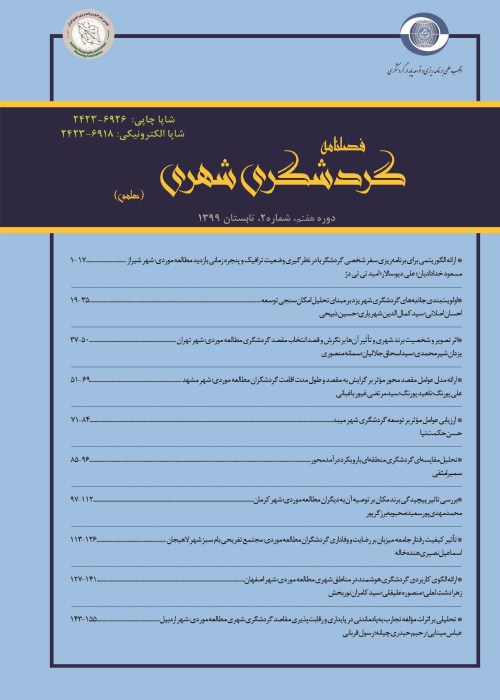Identifying the factors affecting tourism expenditure with emphasis on the family life cycle
A proper understanding of tourists' spending patterns makes it possible for policy makers, planners, marketers and researchers to examine the economic interaction of tourists with the destination community. Families are the main consumers of tourism products; Therefore, it is important to understand and explain the characteristics of household consumption and the factors affecting it, so that tourism policies and marketing strategies are well adopted. The basic question in this research is whether the amount of money spent by Iranian households per household member on domestic trips undergoes significant changes due to economic, demographic, psychological and travel-related characteristics; And to what extent do these factors determine the cost? This research, using a systematic approach at the level of micro-economics, has answered this question and tries to encourage other researchers to enter this issue. The data of this research includes the economic, demographic and psychological characteristics of 628 Iranian households and information related to their last domestic trip until the end of 2018 and before the official outbreak of the corona virus in Iran. The results of this research show the influence of the amount of expenses of the households on the indicators of income, age, education and the type of occupation of the caretaker, the number of dependent and independent children, the number of family members on the trip, the use of a private vehicle and staying at relatives' houses during the trip and the importance Recreational trips are in the consumption basket of the household. Also, after comparing the amount of expenditure of households in different stages of the household life cycle, it was found that the stages of couples without children, single, the third phase of full nest and single parent, respectively, have the highest amount of expenditure on tourism, and the least amount belongs to widowed households. . At the end, suggestions were presented in order to increase financial circulation and benefit as much as possible from the supply chain of tourism in Iran, which can be a suitable guide for future policies in tourism.
- حق عضویت دریافتی صرف حمایت از نشریات عضو و نگهداری، تکمیل و توسعه مگیران میشود.
- پرداخت حق اشتراک و دانلود مقالات اجازه بازنشر آن در سایر رسانههای چاپی و دیجیتال را به کاربر نمیدهد.


